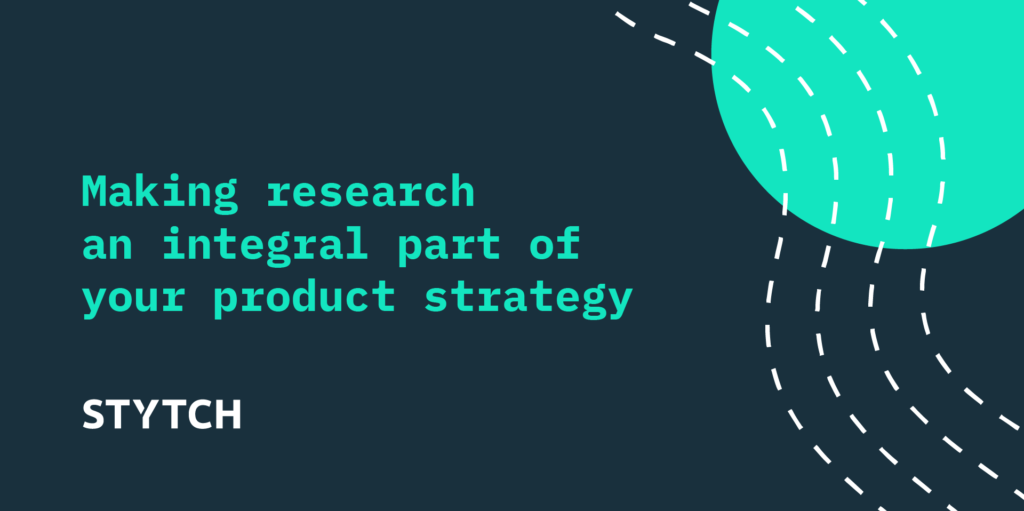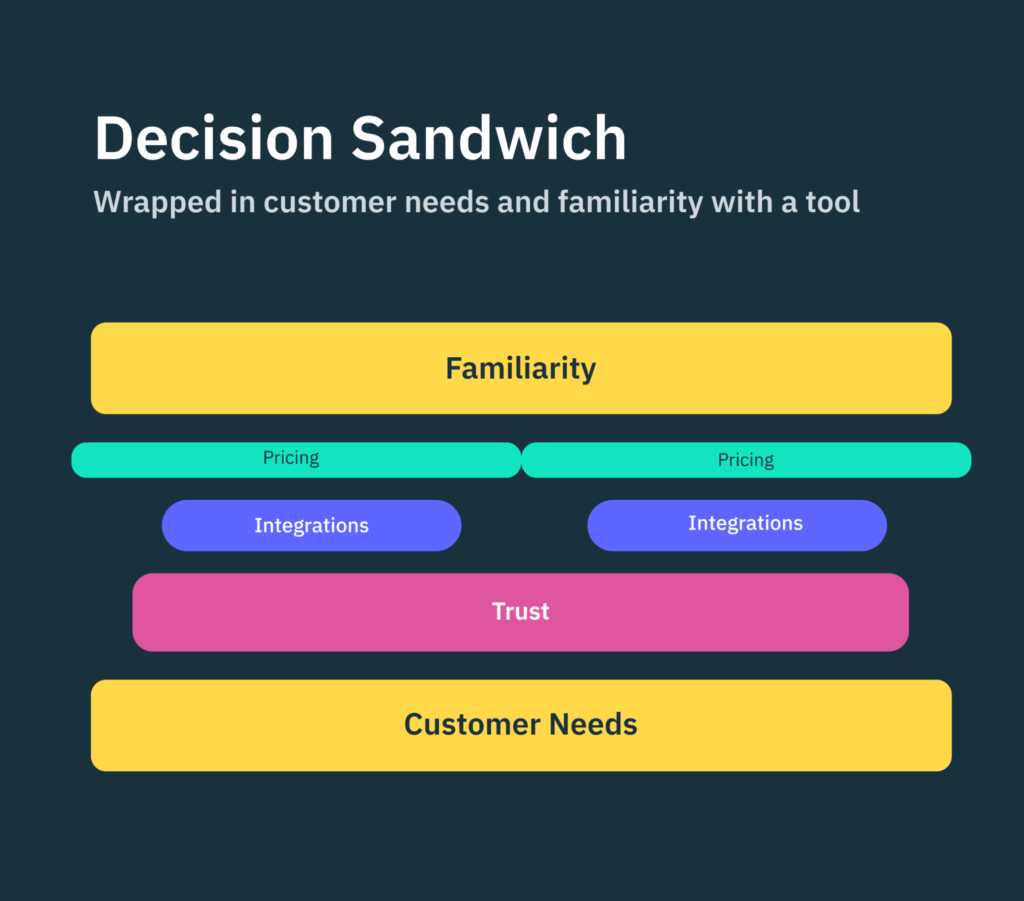Making research an integral part of your product strategy
Latest
Product
March 21, 2022
Author: Stytch Team

When you’re developing a product or service, step one is understanding the needs of the people who will use it. Still, many startups wait to hire research roles, because the benefits seem soft and tenuous when compared with the instant payoffs of launching something quickly.
Everyone knows the story of the three little pigs, but not enough startups take its message to heart. While building something quickly has its place, the company that best understands its purpose tends to win out in the end.
To put that in tangible terms, the 1-10-100 “cost of quality” rule states that it costs 10x as much to correct a product’s design and 100x as much to fix its development than it does to prevent an issue in the first place through proper research. And it holds up. One Forrester report shows that, on average, every $1 businesses invest in user-centered research yields $100 in returns.
I joined the Stytch design team as the first research hire in the summer of 2021, after a decade at other startups. Across that experience, I’d noticed a common trend. When product teams embraced research as part of the development process, they felt more confident in their focus, more aligned on their use cases, and more efficient in meeting their goals.
I brought those lessons with me to Stytch, used them to establish research as a pivotal aspect of our product design, and saw immediate results.
Below, I share some ways you can take advantage of research to help your team gain foundational knowledge, use time and resources effectively, and expose blind spots in the discovery and onboarding process, so you can optimize both your product and your productivity.
Lean on evidence, not guesswork
When you’re at an early-stage startup, there’s no shortage of ideas. Between brainstorms and feature requests, thoughts are always coming your way. It can be tough to cut through the noise and identify the actions your business needs to take to thrive.
But if you base key business decisions on your immediate assumptions or reactions, they’ll reflect the biases of your team, not the desires of your users. This is known as the false consensus effect, or the tendency to overestimate the extent to which your preferences are shared by others.
Conducting a bit of customer research upfront can help you avoid wasting efforts on a product that doesn’t actually solve your users’ problems.
At Stytch, I ask my team to list their assumptions about how our users behave, make decisions, and think about a certain product early in the design process. That helps us build studies, validate or disprove theories using objective data, and learn more about our customer base.
For instance, we initially assumed engineers were the ones choosing an authentication platform based on what they thought were the best security features on the market. Instead, we found decisioning power varied from C-level executives to product managers to entire development teams and often rested on unique end-user needs. A health startup, that is, may require certain levels of HIPAA compliance baked into their authentication.
This sort of insight only comes from posing the right questions—and then answering them through the right level of research.
Uncover your blind spots
As you develop or update a product, you’ll find yourself in situations you never saw coming—often due to factors that weren’t considered at the outset but emerge as major takeaways from research. I call these blind spots, and it’s critical to bring them into focus before starting a project, so you can make effective use of your time and resources.
For example, at Stytch, we realized we hadn’t considered how long it might take developers to evaluate and select an authentication provider. Through research, we found they tend to rely heavily on their familiarity with a given tool and then make a quick choice. Trust is incredibly powerful when implementing a critical service like authentication, and establishing a sense of familiarity can go a long way toward building it.
With that in mind, we were able to redirect design and marketing efforts to make our products more familiar and accessible to developers before they even needed an authentication solution, ultimately giving Stytch a leg up during the decision making process.
Now, we keep a diagram of the “decision sandwich” on hand to remind our team how important familiarity and customer needs are to our product development.

product familiarity front of mind.
Understand your use cases
For startups, it can be hard to zero in on the right user experience. There are many competing factors to consider, from what competitors are doing to how industry trends are evolving to what reviewers are saying. It’s easy to forget that the only experience that matters is the one that helps your customers and your business meet their primary goals.
Prioritizing research at the outset of a project helps you set a benchmark for success. You can always come back to your roadmap later to ensure you’re still on the right track and addressing the right problems (and adjust your approach if you’re not).
After working to understand our customers’ decision-making process, the next logical step at Stytch was to make sure our onboarding was up to scratch. So, we did some foundational research to learn what happened after developers chose us as their authentication provider.
We found that they often dove immediately into our docs and explored the possibilities before selecting and setting up a specific product like email magic links. That helped our product designers focus their efforts, make swift and practical decisions, and put together a revamped onboarding experience that would truly delight our users.
Empower your team
It’s common for small startup teams to lean on sales or partner conversations as informal user interviews. This can be an easy way to gather feedback and quickly assess your next steps—but it’s no substitute for formal research.
I’ve found teams are less likely to pursue research if they think they’ll run into a bottleneck that will hold up their project. That’s why I empower my team with a self-service guide that helps them implement research early and often.
Before, team members would have to wait anywhere from two to four weeks to book time with me and discuss their research process. With the self-service guide, they can lean on quick templates to get started and consult best practices to ensure they’re talking to the right people and asking the right questions. Now, they can create solid research plans on their own within one to two days.
Key takeaways
Making research an early and integral part of a user-centered design process can help your team build confidence and clarity around the customer needs you’re looking to meet.
It’s an upfront investment, but one that—if made carefully and intentionally—will yield countless results for your users and your business.
Our team is growing
Interested in bringing your research and design skills to Stytch? Check out our available positions, and get a feel for some of the projects we’re working on. Learn more.